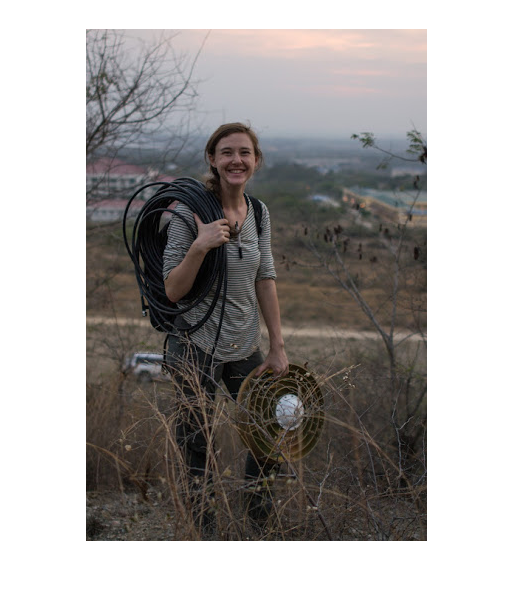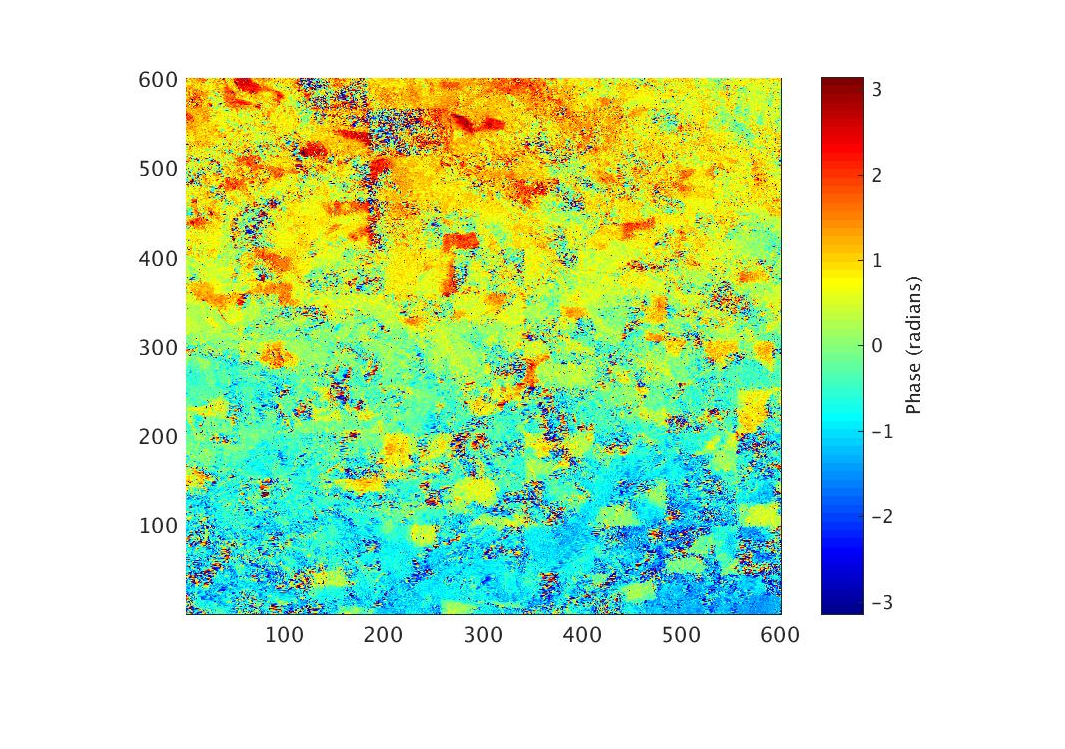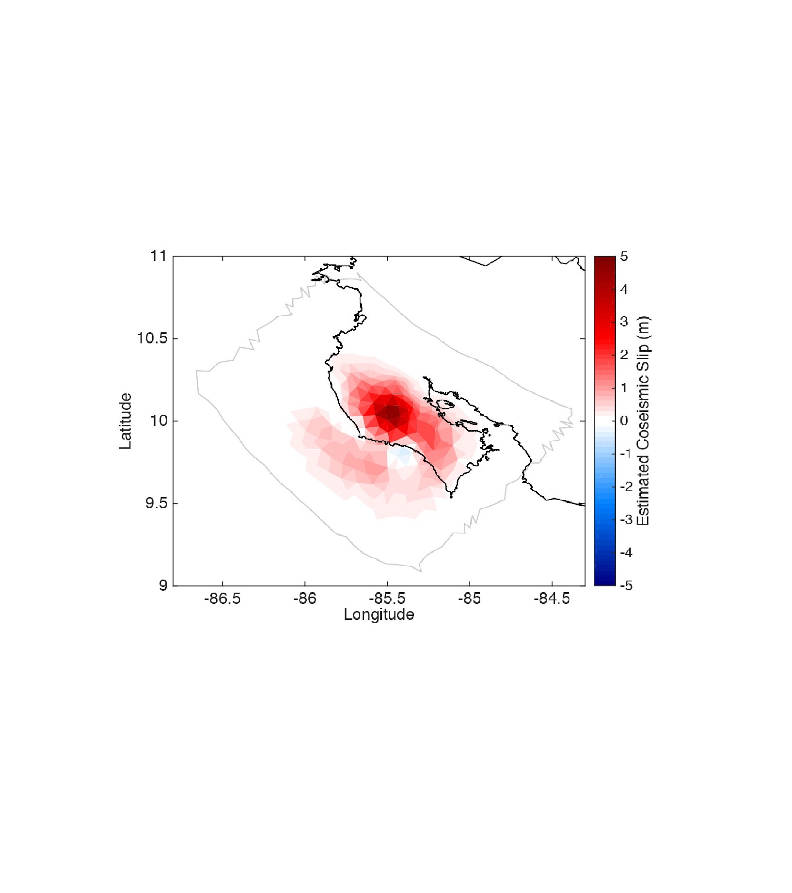Why She Loves MATLAB
#shelovesmatlab
Today's guest blogger is Penny Anderson, Senior Engineer Manager, MATLAB Products. And she is going to answer the big question today, WHY?
Contents
- A Suggestion for WHY
- What Does The WHY Function Do?
- The Names in WHY
- Adding Female Names to WHY
- New WHY
- Paula Loves MATLAB
- More About Paula Burgi
- Can you tell us how you came to be in this field?
- How did you decide to become a researcher?
- Who are some of the women in your personal and professional life who have influenced you the most? What was their contribution to your growth?
- How do MATLAB and other MathWorks tools help you in your work?
- Why Do You Love MATLAB?
A Suggestion for WHY
On July 12th, 2012 a suggestion came in through our MATLAB Central forum
The "why" function on MATLAB assumes the gender of users. In fact, both men and women use MATLAB. For example, the proper noun section contains solely names generally reserved for men. It would be appreciated if this were remedied.
This comment came from a MATLAB user Paula Burgi, then an undergraduate student of Geoscience at Smith College. When we asked her about it more recently, Paula recalled:
It was actually during my first summer doing scientific research during college. I was learning how to use Matlab, and came across the “why” command while trying to teach myself some Matlab basics. At the time I was under the impression that coding languages were only very serious and practical tools, no humor allowed. So it was a fun surprise to see that Matlab had these built-in commands intended just to give the user a laugh. However, since I was attending Smith College (an all-women’s institution), it did not escape me that almost all the names that were implemented in the “why” command were male. It was a sad reminder that the rest of the world was not filled with female scientists and computer programmers, contrary to my experience at Smith. Having both male and female names seemed like a simple but effective measure to make science feel just a little bit more inclusive, so I decided that I would send an email to Matlab making this suggestion.
Four days later Mathworks Employee #1 Loren Shure turned the comment into an Enhancement request and it landed on my desk. At the time, I was managing a couple of groups of software developers – all of them men – working on MATLAB. Because of my management responsibilities, I didn’t get to do much fun coding work anymore. So, when this small but intriguing project caught my attention, I jumped on it.
What Does The WHY Function Do?
I took a look at the why function, which is really a simple demo that builds up arbitrarily long sentences leveraging a random number generator and a fixed set of nouns, adjectives, verbs, proper nouns and so on. Here are a couple fun examples:
rng(27); why
A good kid obeyed a very young and terrified mathematician.
rng(111); why
Loren suggested it.
The Names in WHY
Sure enough, the proper names used to construct the sentences included:
- Cleve for Cleve Moler, the original author of MATLAB and co-founder of MathWorks
- Jack for Jack Little, our President and CEO, founder of MathWorks
- Bill for Bill McKeeman, a compiler expert and the author of the why function
- Joe for Joe Hicklin, our chief scientist and all-around idea instigator
- Pete, for G.W. “Pete” Stewart, a numerical analyst and long-time colleague of Cleve Moler
- Loren for Loren Shure, MathWorks Employee #1, actually a woman, but with a more conventional male spelling to her name
- Damian for Damian Packer, one of the original authors of Handle Graphics in MATLAB
- And Barney for the purple dinosaur?
Adding Female Names to WHY
“Hmm”, I thought. “She’s right. There are no obvious female names. I can fix that!”
I added my own name – Penny. After 16 years of being in software development and management at the very core of the math capabilities in MATLAB, I was one of the most senior women in Engineering.
Even though I was the only woman in my group at that time, I was actually unusual for the software development industry in that I had already had three female managers in my years at MathWorks, including my original hiring manager Loren Shure. Since Loren’s name was already on the list, I added the other two names – Mary Ann and Nausheen – as well.
Finally, I added the name – Mara – of another long-time colleague who was also a manager of a software development group at MathWorks.
Soon I was ready to submit the change to our continuous integration system. After passing all tests, the new improved version of the why demo went out to MATLAB users world-wide with Release R2013a.
New WHY
And now Paula and all MATLAB users may be amused by reasons like:
rng(5); why
Because Mara wanted it.
rng(13); why
Mary Ann wanted it that way.
rng(44); why
Nausheen told me to.
rng(75); why
Penny knew it was a good idea.
Paula Loves MATLAB
Over the years I thought of Paula’s request from time to time. Finally, in 2018 as our grassroots group of Women at MathWorks was spreading #shelovesmatlab and we were getting ready to attend the Grace Hopper Celebration of Women in Computing, I reached out to Paula by email, after tracking her down to her new role as a PhD student at Cornell. To my pleasant surprise she responded enthusiastically.
What a nice email to get! I'm surprised and delighted to hear that my comments years ago are still being considered today. I tried it out for myself, and sure enough I got Mary Ann, Penny, and even Mara!
As a graduate student in geophysics, I still use MATLAB every day! It's definitely my preferred data analysis software.
More About Paula Burgi
We took the opportunity to interview Paula about her work and her love of MATLAB.
Paula is currently a PhD student at Cornell University, studying geophysics and remote sensing. She received a B.A. at Smith College in Geosciences and Astronomy, then went on to work as a research assistant at the Earth Observatory of Singapore. There, she helped with active seismic imaging of the Main Frontal Thrust in Nepal, and conducted research on shallow megathrust fault geometry in Bangladesh. She now studies how remote sensing techniques can be improved to study earth deformation.

Installing GPS stations to track fault movement in Sagaing, Myanmar.
Can you tell us how you came to be in this field?
I’ve always been interested in earth science, especially earthquakes. I grew up in Oak Park, IL, but traveled to Switzerland often during my childhood because my father is Swiss. The stark contrast between the very flat Midwest and the dramatic topography of the Swiss Alps had me pondering about geological processes at a young age. When I learned that researching the earth was a job, I never looked back! I ended up studying tectonics, particularly earthquakes. I have done both geological fieldwork to look at effects of past earthquakes, as well as geophysical work using geodetic data to track current deformation of the earth’s crust. Now, I use satellite radar data (InSAR) to observe deformation due to earthquakes, volcanoes, and many other sources. I am currently assessing how vegetation can affect these measurements (figure below).

Example of satellite radar data (InSAR), showing the signal introduced by vegetation loss in Oregon (rectangular features).
How did you decide to become a researcher?
I decided in high school that I wanted to pursue science. I loved my high school physics class, the teacher really wanted students to conceptualize what we were learning in class as to apply it to everyday life. I also took geology and astronomy (both of which ended up being my majors in college), both of which were very self-guided classes, much like real research! What finally cemented my desire to become a researcher was a summer research internship I did in college. I used GPS data to deduce information about the subduction zone offshore Chile. This internship was my first real experience with research (and Matlab!), and I absolutely loved the everyday challenges of taking a large-scale research question, breaking it down, and posing it in terms of a script.
Who are some of the women in your personal and professional life who have influenced you the most? What was their contribution to your growth?
As cliche as it may sound, my mother had a huge impact on my personal growth as a scientist. She is a doctor, graduating from medical school when only ~25% of her class was women. Her curiosity about the natural world definitely rubbed off on me, like when she would get out a microscope to enthusiastically look at the different kinds of mold that would grow on expired food items. She led by example when it came to pursuing things that you are passionate about, particularly when most people doubt you’ll be able to achieve it. I’ve had 2 excellent female academic advisors, one at the Earth Obervatory of Singapore and the other during my current PhD research. Both of these women have shown me that it is very much possible to have a balanced work-home life, and that it does not make you any “less” of a scientist.
How do MATLAB and other MathWorks tools help you in your work?
My undergraduate thesis looked at GPS and geologic data before and after a large earthquake in Costa Rica. I used this data to model where the earthquake occured, and to gain insight into how our modeling techniques can bias our output. My main question was: How do different fault models effect the earthquake location and magnitude? Determining earthquake location and magnitude using surface displacement data is a classic inverse problem. I used Matlab’s inverse linear inverse function to determine the earthquake parameters. I also used Matlab’s mapping toolbox to visualize the data and models. Finally, I used Matlab’s parallel computing toolbox, which sped up calculations by a lot! I found that the different fault models resulted in up to 30% more energy released by an earthquake. The most realistic fault model resulted in a slip distribution that appeared to be controlled by small variations in the surface of the fault. I learned all I know to this point about computational geophysics from Matlab. I still use Matlab almost every day, and continue to grow as a scientist because of it!

Fault slip from the 2012 Costa Rica Earthquake, derived from GPS data using Matlab’s built-in matrix inversion functions.
Why Do You Love MATLAB?
Please share this post with the #shelovesmatlab hashtag. Know an amazing woman who loves our tools you’d like us to blog about? Let us know here.









Comments
To leave a comment, please click here to sign in to your MathWorks Account or create a new one.